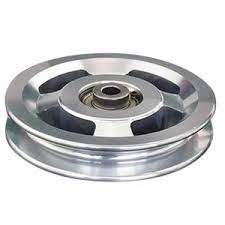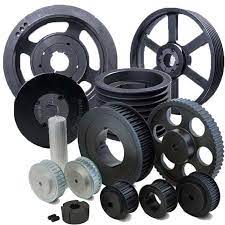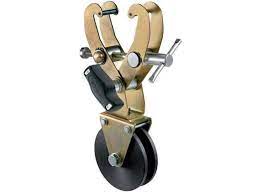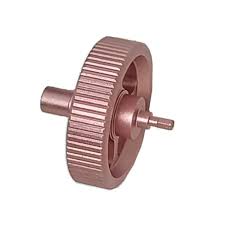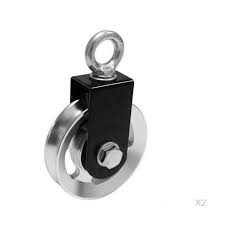Product Description
Motorcycle Parts CNC Processing Manufacturing China Automobile Square Nut Machining Sleeve Spacer Pulley
Product Information
Product Information:
| 1 | Business Type: | Custom CNC Milling Service (3-axis, 4-axis, 5-axis) Custom CNC Turning Services EDM Wire-EDM |
| 2 | Standard: | JIS, ANSI |
| 3 | Products Range: | Automobile parts,wind power generation equipment accessories,wind power generation equipment accessories, ER fluid, medical apparatus and instruments, standardization of custom, moto parts, machinery parts, lighting components, hardware accessories, electric motor products, etc |
| Agricultural machinery, electrical appliances, furniture hardware | ||
| 4 | Materials: | 1.Stainless Steel: SS201, SS303, SS304, SS316 etc. |
| 2.Carbon Steel: AISI 1045, 9SMnPb28 etc | ||
| 3.Brass: C36000 (C26800), C37700 (HPb59), C38500(HPb58), C27200(CuZn37), C28000(CuZn40) etc. | ||
| 4.Bronze:C51000, C52100, C54400, etc. | ||
| 5.Iron:Grey iron and ductile iron | ||
| 6.Aluminum:6061, 6063,7075,5052 etc. | ||
| 7.Magnesium Alloy: AZ31, AZ61, AZ91 | ||
| 8.Plastic: PEEK, POM, NYLON, TEFLON, ABS…etc | ||
| 9.Titanium: TC4 | ||
| 5 | Machining: | Turning, Milling, Drilling, Grinding, Cleaning, |
| 6 | Main equipments | CNC lathe, CNC milling, Stamping machine, |
| Automatic lathe, Grinder, Tapping | ||
| Drilling machine…etc | ||
| 7 | Measuring & Testing equipments | CMM, Profile Projector, Rockwell Hardness Tester, CHINAMFG Hardness Tester, Roughness Tester, Micrometers, height gauge, Calipers… etc. |
| 8 | Accuracy: | Accuracy Of Machining:+/-0.005mm |
| Accuracy Of Grinding:+/-0.005mm | ||
| Surface Roughness:Ra0.8 | ||
| Parallelism:+/-0.005mm | ||
| Verticality:+/-0.005mm | ||
| Concentricity:0.003mm | ||
| 9 | Surface Treatment: | Polishing, Deburring, Chrome Plating, Ni Plated, Zinc plated, Silver platinng |
| Anodizing various colors, Carburizing Nitriding, Heat Treatment, etc… | ||
| 10 | MOQ | 1 ~10000pcs. |
| 11 | DRW Format: | DWG, PDF, IGS, STEP, SLDPRT, SLDDRW, PRT, DRW, DXF, X_T, etc… |
| 12 | QC System: | 100% Inspection before shipment |
| 13 | Certificate | ISO9001: 2015, SGS Factory Audit |
| 14 | Payment Term: | 30% T/T + 70% T/T, Western Union, PayPal, L/C |
| 15 | Trade Terms: | FOB, CIF, L/C |
| 16 | Lead time: | 7~45 days after confirming |
| 17 | Sample Lead Time: | 3-7 Working Days |
| 18 | Transport Package: | Foam/wooden box, Anti-rust paper, Small box and carton, Pallets… etc. |
| 19 | Origin: | China |
| 20 | Our Advantages: | Reliable Quality |
| Competitive Price | ||
| High precision, high quality, high accurancy | ||
| Continuous Improvement | ||
| Defect-Free Products | ||
| On-Time Delivery | ||
| Customer Satisfaction | ||
| Excellent After-Sales Service |
Production Process
Company Profile
JieChen Precision Manufacturing Co., Ltd is a professional precision machining parts manufacturer. We specialize in precision machining parts processing, precision tooling, jig & fixture, automation equipment design and manufacturing.
Since its establishment in 2012, the company has been developing at a high speed. Now with big space workshop and many advanced production equipments and precision measure equipments.
Customers distributes to Europe and the United States, Japan, Germany, England and the mainland international CHINAMFG enterprises, the company has been focusing on human resources development and training, provide the broad development space for the employees.
Products covered the defense, aerospace, electronics, medical, semi-conductor, automation and other industries. With parts variety, high precision, large, medium batch processing parts, product precision reached 0.002 mm, in compliance with ISO, ASME, DIN, JIS quality systems.
JieChen Precision – Your Right Choice!
Quality Control Standards
To consistently exceed customer expectations, qua lity control and assurance is achieved through
Comprehensive written procedures and policies
Fully equipped inspection department
Detailed records of incoming raw materia
Consistent calibration and labeling of inspection tools
Analysis of root cause of non-conformances.
Staff members being strongly encouraged to sugqest improvements in methods, materials and suppliers
Certifications
Application instructions
Packaging & Shipping
FAQ
Q: Are you trading company or manufacturer ?
A: We are direct factory with experienced engineers and employees as well as well-organized workshop.
Q: How long is your delivery time?
A: Generally it is 5-10 days if the goods are in stock. or it is 15-20 days if the goods are not in stock, it is according to quantity.
Q: Do you provide samples ? is it free or extra ?
A: Yes, the sample fee depends on the product geometry, and the fee will be returned to your bulk order.
Q: How long can I get the sample?
A: Depends on your part geometry, normally within 3-7 days.
Q: How long is your delivery time?
A: Sample 3-7days; Mass production order 7-45 days depends on quantity and part complexity.
Q: What is your terms of payment ?
A: Payment=1000USD, 30% T/T in advance ,balance before shippment.
Q: What’s kinds of information you need for a quote?
A: Kindly please provide the product 2D drawing with PDF or DWG format and 3D drawings with STEP or IGS or X_T format, and other requirements like: surface treatment, quantity…etc.
Q: What is your standard PO procurement process flow?
A: Prototyping —-> FA approval —-> Quality Control Plan —> Manufacturing Process Instruction —> Batch Production —> Inspection —> Shipping
Q: What shall we do if we do not have drawings?
A. Please send your sample to our factory, then we can copy or provide you better solutions. Please send us pictures or drafts with dimensions (Length, Height, Width), CAD or 3D file will be made for you if placed order.
Q: Will my drawings be safe after sending to you?
A: Yes, we can CHINAMFG the NDA before got your drawing and will not release to the third party without your permission
Q: Is it possible to know how are my products going on without visiting your company?
A: We will offer a detailed production schedule and send weekly reports with digital pictures and videos which
show the machining progress
Q: How to enjoy the OEM services?
A: Usually, base on your design drawings or original samples, we give some technical proposals and a quotation
to you, after your agreement, we produce for you.
If you have another question, pls feel free to contact us
/* January 22, 2571 19:08:37 */!function(){function s(e,r){var a,o={};try{e&&e.split(“,”).forEach(function(e,t){e&&(a=e.match(/(.*?):(.*)$/))&&1
| Condition: | New |
|---|---|
| Certification: | CE, RoHS, GS, ISO9001 |
| Standard: | DIN, ASTM, GOST, GB, JIS, ANSI, BS |
| Customized: | Customized |
| Material: | Magnesium Alloy |
| Application: | Metal Recycling Machine, Metal Cutting Machine, Metal Straightening Machinery, Metal Spinning Machinery, Metal Processing Machinery Parts, Metal forging Machinery, Metal Engraving Machinery, Metal Drawing Machinery, Metal Coating Machinery, Metal Casting Machinery, Medical Spare Part, Telecommunication Part |
| Samples: |
US$ 100/Piece
1 Piece(Min.Order) | |
|---|
| Customization: |
Available
| Customized Request |
|---|
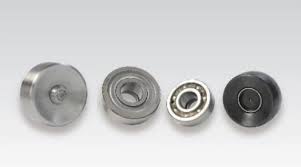
What is the significance of proper alignment and tensioning in spinning pulley systems?
Proper alignment and tensioning are crucial factors in the performance and longevity of spinning pulley systems. The significance of these practices can be summarized as follows:
1. Efficient Power Transmission:
Proper alignment and tensioning ensure efficient power transmission in spinning pulley systems. When pulleys are correctly aligned, the belt, rope, or cable runs smoothly along the pulley’s grooves, reducing friction and energy losses. Additionally, maintaining appropriate tension in the belt or cable prevents slippage, maximizing power transfer from the driving pulley to the driven pulley.
2. Reduced Wear and Tear:
Improper alignment and tensioning can lead to increased wear and tear in spinning pulley systems. Misalignment can cause the belt or cable to rub against the edges of the pulley, resulting in accelerated wear, fraying, or even belt failure. Insufficient tension can cause the belt to slip, leading to excessive heat generation and premature wear. Proper alignment and tensioning help minimize these issues, extending the lifespan of the pulleys and the belts or cables.
3. Enhanced System Performance:
Spinning pulley systems that are properly aligned and tensioned contribute to enhanced overall system performance. When the pulleys are aligned, the system operates smoothly, reducing vibrations and noise. This improves the user experience and allows for precise control and predictable movement in various applications, such as fitness equipment, industrial machinery, or conveyors.
4. Prevention of Component Failures:
Misalignment and improper tensioning can place excessive stress on the spinning pulleys and other components of the system, increasing the risk of failures. Misaligned pulleys can cause uneven loading and additional strain on bearings, shafts, or belts, potentially leading to component damage or system breakdowns. Maintaining proper alignment and tension helps distribute the load evenly, minimizing stress on individual components and reducing the likelihood of failures.
5. Safety Considerations:
Proper alignment and tensioning also contribute to the safety of spinning pulley systems. Misaligned pulleys or loose belts can lead to unexpected belt disengagement, causing accidents or injuries. In applications where pulleys are exposed or accessible to users, maintaining proper alignment and tensioning reduces the risk of entanglement or contact with moving parts, enhancing user safety.
6. Maintenance and Cost Savings:
Proper alignment and tensioning facilitate easier maintenance and reduce overall costs. Well-aligned pulleys experience less wear and require fewer adjustments or replacements. Proper tensioning reduces the need for frequent belt replacements due to slippage or excessive wear. By implementing and maintaining proper alignment and tensioning practices, the frequency of maintenance tasks and associated costs can be minimized.
In summary, the significance of proper alignment and tensioning in spinning pulley systems lies in efficient power transmission, reduced wear and tear, enhanced system performance, prevention of component failures, safety considerations, and maintenance and cost savings. These practices ensure optimal operation, reliability, and longevity of the pulley systems, benefiting a wide range of applications in various industries.
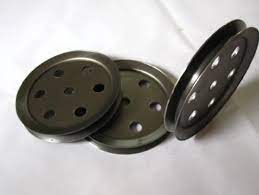
How do you select the right spinning pulley configuration for a specific task?
Selecting the right spinning pulley configuration for a specific task involves considering several factors to ensure optimal performance and compatibility. Here are the key steps in selecting the appropriate spinning pulley configuration:
1. Determine Power Requirements:
Assess the power requirements of the task or system where the pulley will be used. Consider factors such as the torque or rotational force needed, power transmission efficiency, and desired speed range.
2. Identify Belt Type and Size:
Determine the type and size of the belt or rope that will be used with the pulley. Different pulley configurations are designed to work with specific belt types, such as V-belts, timing belts, flat belts, or ropes. Ensure that the pulley and belt are compatible in terms of size, width, and groove design.
3. Consider Speed and Torque Requirements:
Evaluate the required rotational speed and torque for the task. Depending on the application, you may need to select a pulley configuration that offers speed variation options, such as step pulleys, or one that provides precise synchronization, such as timing pulleys.
4. Assess Environmental Factors:
Take into account the environmental conditions in which the pulley will operate. Consider factors such as temperature, humidity, dust, and exposure to chemicals or corrosive substances. Choose a pulley configuration that can withstand the anticipated environmental conditions without compromising performance or durability.
5. Evaluate Belt Tension and Alignment:
Consider the requirement for proper belt tension and alignment in the system. Depending on the application, you may need to incorporate idler pulleys or crowned pulleys to maintain optimal belt tension and prevent belt slip or misalignment.
6. Seek Manufacturer Recommendations:
Consult the manufacturer’s guidelines, specifications, and technical documentation for the specific pulley configuration options they offer. Manufacturers often provide recommendations based on the intended application, power requirements, and belt compatibility.
7. Consider System Integration:
Ensure that the selected spinning pulley configuration can be easily integrated into the existing system or machinery. Consider factors such as mounting options, shaft size compatibility, and overall system design.
8. Consult Experts if Needed:
If you are unsure about the appropriate spinning pulley configuration for a specific task, consider consulting experts, engineers, or suppliers who specialize in power transmission or the specific industry. They can provide valuable insights and recommendations based on their expertise and experience.
By following these steps and considering the various factors involved, you can select the right spinning pulley configuration that meets the specific requirements of your task or system. It is essential to ensure compatibility, efficiency, and reliability to achieve optimal performance and longevity.
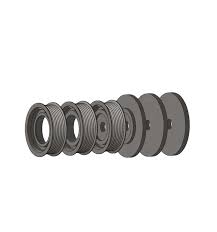
In which industries and applications are spinning pulleys commonly used?
Spinning pulleys, also known as rotating pulleys or idler pulleys, are widely used in various industries and applications for different purposes. Here are some industries and applications where spinning pulleys are commonly employed:
1. Automotive Industry:
In the automotive industry, spinning pulleys are frequently used in engines and powertrain systems. They are part of the accessory drive system, where they help drive and control various components such as the alternator, water pump, power steering pump, and air conditioning compressor. Spinning pulleys assist in transmitting power and maintaining proper belt tension, ensuring the efficient operation of these auxiliary systems.
2. Manufacturing Industry:
Spinning pulleys are extensively utilized in the manufacturing industry for material handling, conveyor systems, and power transmission. They are commonly found in assembly lines, packaging equipment, and production machinery. Spinning pulleys enable the smooth and controlled movement of belts or ropes, facilitating the transportation of materials or the operation of mechanical systems.
3. HVAC and Refrigeration Systems:
In heating, ventilation, air conditioning, and refrigeration systems, spinning pulleys are employed to drive the compressor, condenser fan, and other components. They help transfer rotational power from an electric motor to these systems, enabling the circulation of refrigerants and the regulation of temperature and humidity in buildings, vehicles, and refrigeration units.
4. Agricultural Equipment:
Spinning pulleys are commonly used in agricultural machinery and equipment. They play a crucial role in driving the belts or chains that power various agricultural implements such as combine harvesters, tractors, seeders, and irrigation systems. Spinning pulleys assist in transmitting power from the engine to these implements, facilitating agricultural operations.
5. Material Handling and Conveyor Systems:
Spinning pulleys are integral components of material handling and conveyor systems in industries such as mining, logistics, and warehousing. They are utilized to redirect or change the direction of belts, ropes, or chains, enabling the movement of bulk materials, packages, or products along the conveyor lines. Spinning pulleys contribute to the efficient and reliable transportation of goods.
6. Fitness Equipment:
In fitness equipment such as treadmills, elliptical trainers, and stationary bikes, spinning pulleys are utilized to transfer power and create resistance. They are part of the system that connects the pedals or handles to the flywheel, allowing users to exert force and engage in cardiovascular or strength-training exercises.
7. Mining and Construction:
In mining and construction machinery, spinning pulleys are employed in various applications. They are utilized in conveyor systems for bulk material handling, as well as in equipment such as excavators, cranes, and drilling rigs. Spinning pulleys assist in transferring power to different components and enabling the movement of materials or heavy loads.
These are just a few examples of the industries and applications where spinning pulleys are commonly used. Their versatility, ease of installation, and reliability make them an essential component in numerous mechanical systems and equipment across various sectors.


editor by CX
2024-05-15
